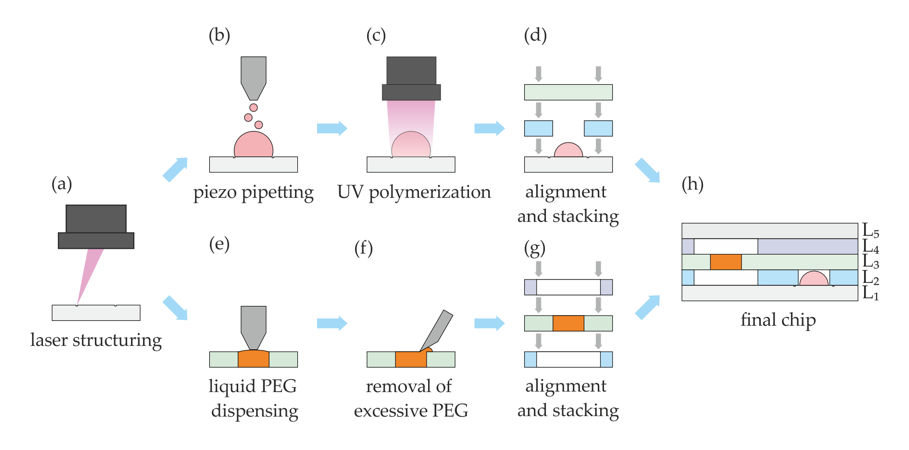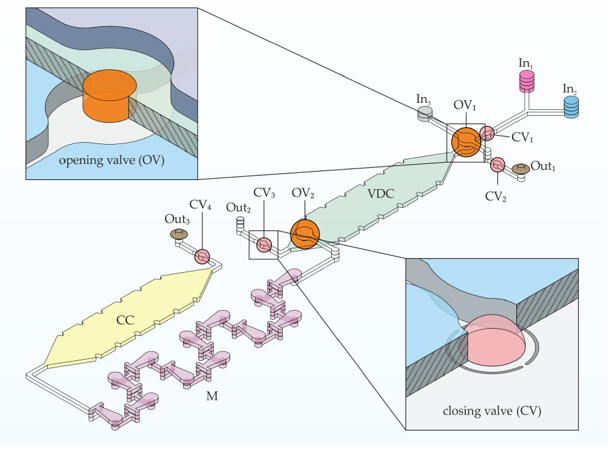Multi-Material Printing: An Approach to Chemofluidic Valves for Microfluidic Applications:
GeSiM 3D bioprinters are not limited to developing artificial tissues by printing of bioinks. Customers were already producing multilayer structures for printed electronics.
The ability to combine a wide variety of extrusion methods allows for much more: A team from Technical University Dresden and the University Hospital Dresden just presented a project to print microfluidic actuators directly into microfluidic flow cells. The combination of different actuators enabled the functional combination of normally open and normally closed valves at predefined positions in the microfluidic chip. The valve functions are triggered just by contact with liquid, without any external power supply or control electronics. This is an interesting approach, for example to realize low-cost lateral-flow assays with “built-in” management of different fluids.
The presented microfluidic chip is based on a multilayer system with laminated separating layers and fluid-conducting layers. Laser-engraved PMMA or PE films were used for the individual layers. Figure 1 shows the basic structure. Using the BioScaffold Printer BS3.2 from GeSiM, very different materials were applied at the positions of the chemofluidic valves: An UV-curable Hydrogel was dispensed by piezoelectric nozzles to make normally open valves. These valves are closing by contact with water. PEG (molar weight approx. 35.000 g/mol) was extruded pneumatically at a temperature of 92°C (198 °F) for the normally closed valves.
The basic functionality of the microfluidic flow cell comprises the delivery of defined sample volumes, the mixing of two samples and their transport through the microfluidic system using a third functional liquid. The interconnection of the functional elements is shown in Figure 2.

Fig. 1:Basic process steps for the manufacturing of the multilayer microfluidic chip. The process steps (b), (c) and (e) were made with the GeSiM BioScaffold printer.

Fig. 2: Functional elements of the microfluidic chip including the chemofluidic valves.
This video demonstrates the basic functionality of the microfluidic flow-cell
This article is based on the following publication: A. Kutscher, P. Kalenczuk et al.: Fabrication of Chemofluidic Integrated Circuits by Multi-Material Printing, MDPI Micromachines, 02/2023 (https://doi.org/10.3390/mi14030699)
